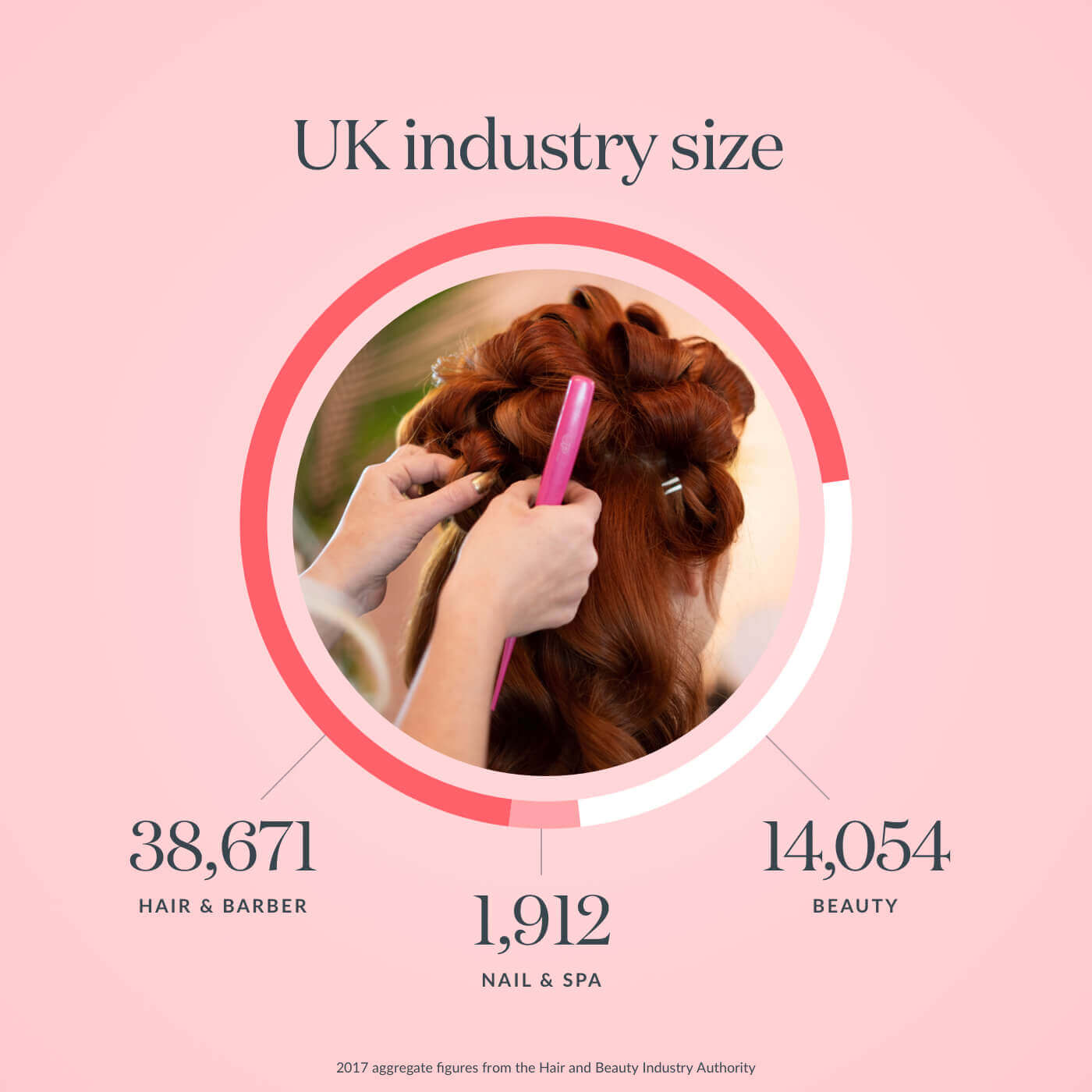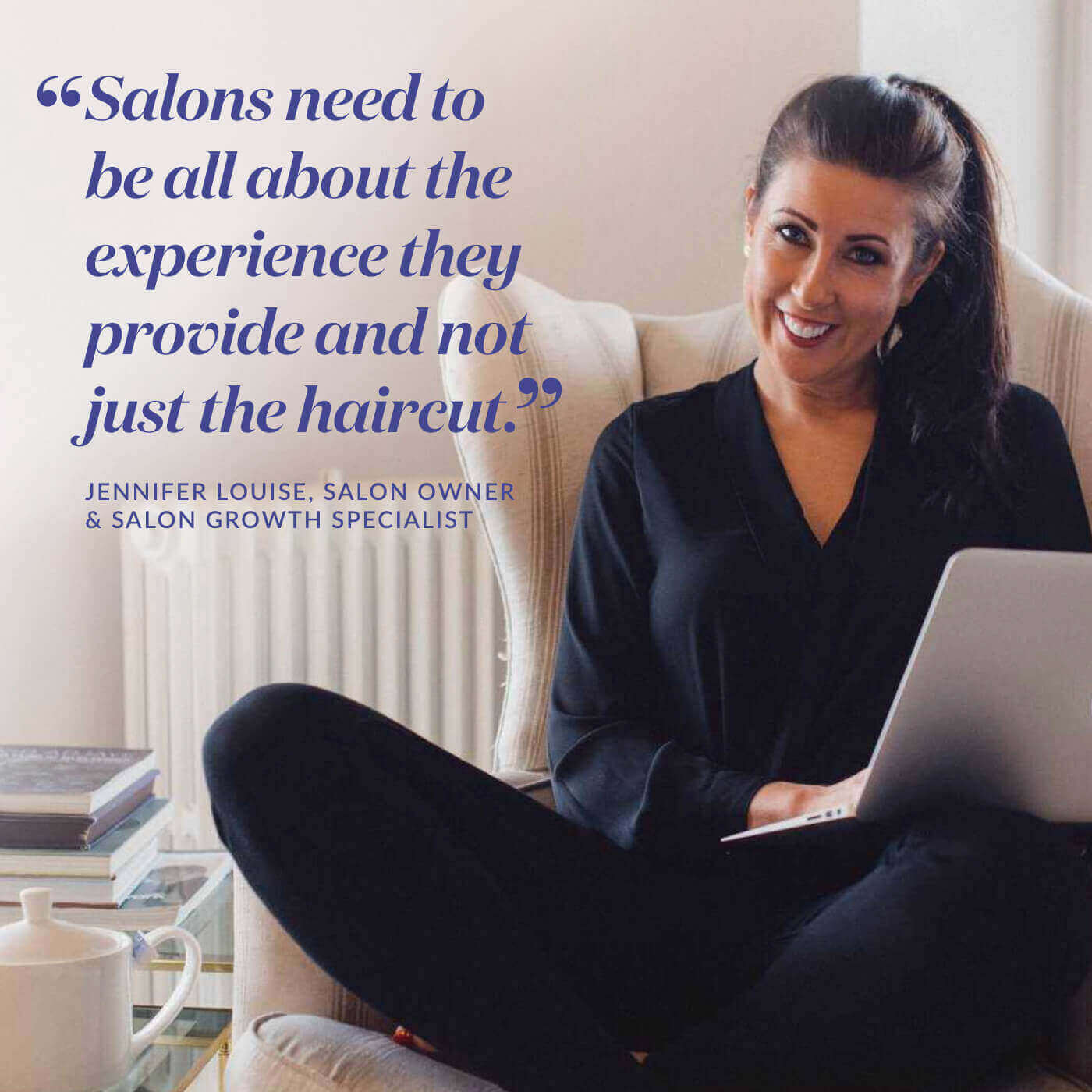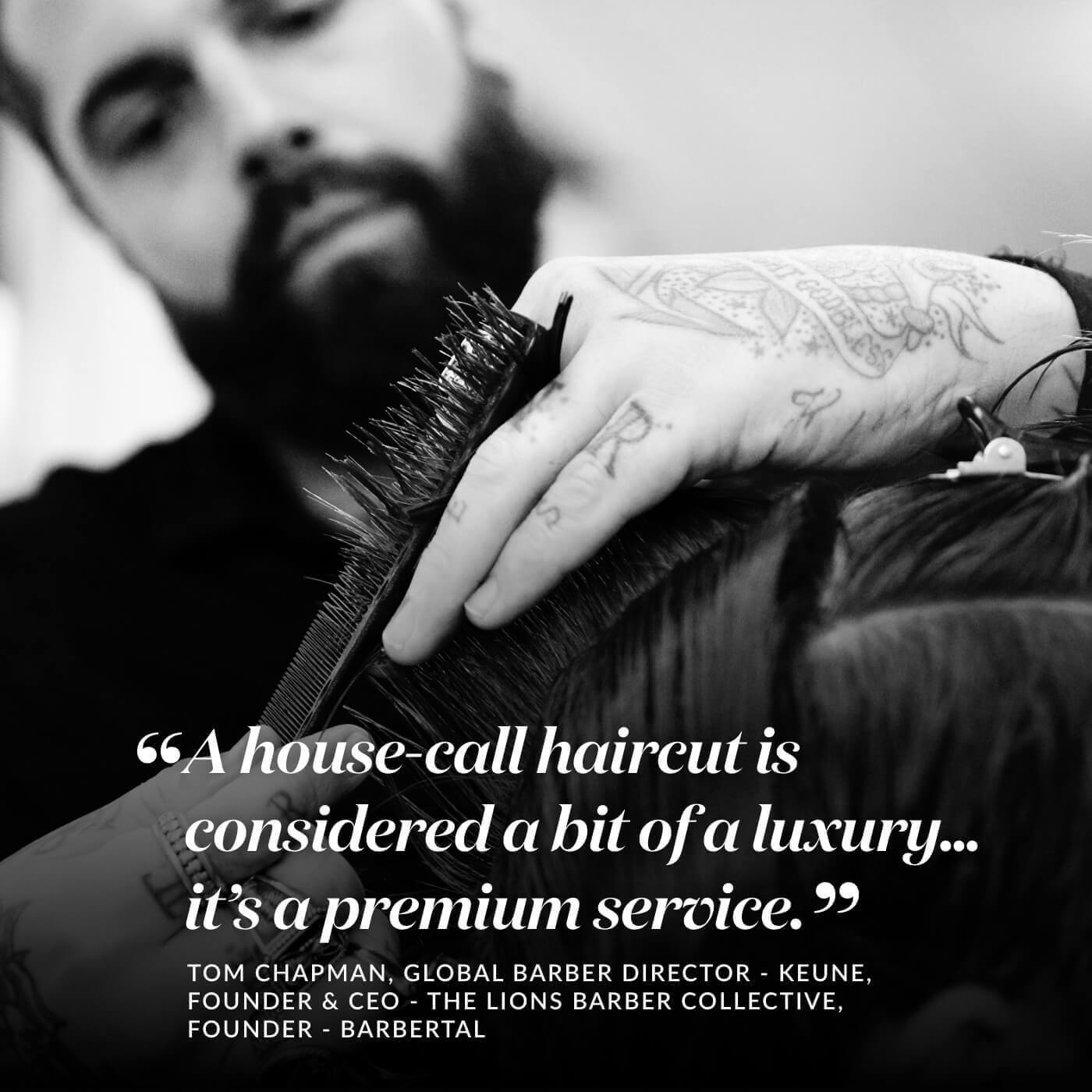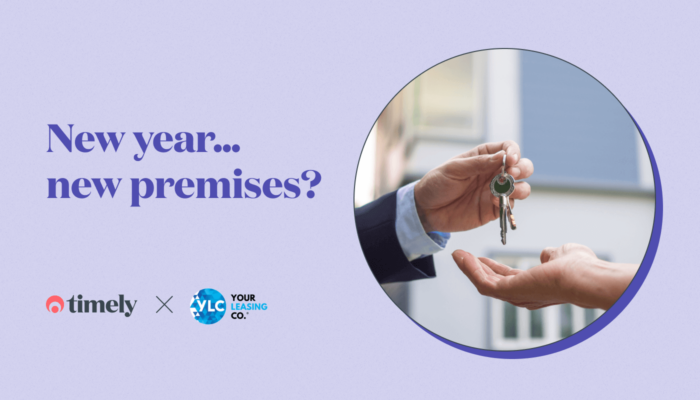My way or the high street way?
Business experts have been talking about the long, drawn-out death of the British high street for years. As big names shut up shop, many home-based hairdressers, beauty therapists and barbers are thriving. So, what's the secret of their success? Is it possible to run a successful high street salon or has that dream died? Timely investigates.

What’s happening to the high street?
If you believe the headlines, it’s easy to think that the high street is no longer where it’s at for thriving UK businesses. There have been closures aplenty in recent years – a study of the top 500 British town centres found that 1,722 high street shops or businesses closed for good in 2017. Even big names like John Lewis, Marks & Spencer and Debenhams have felt the chilly winds of change.
There’s no doubt that the high street is a tough place to do business. According to 2017 figures from the Hair and Beauty Industry Authority, the UK has 35,704 hair salons, 1,512 nail bars and 13,107 beauty salons. That’s a lot of competition. If you’re going to tackle the high street, you need to be confident that your business has got what it takes to succeed. Especially if you’re still building your customer base.
Renting space in a prime location can be crippling. You’re likely to face high set-up costs, not to mention ‘invisible’ bills like local utility rates and insurance. Local regulations can limit your opening hours, parking may be tight and rising business rates (a property tax based on rental values) will hit your bottom line before you’ve even switched the lights on.
Large numbers of struggling salons have been forced out of city centres and into out-of-town developments where there are new roads, free parking and lower costs. Louise Hunter, award-winning hairstylist and owner of Rubies Salon in Lindley, highlights these amenities as the key factor drawing consumers away from high street salons. Looking back at her own experience of working on high street, she says,
We have numerous empty shops and only a handful of bars. Clients often visit either Leeds or Manchester as they’re both thirty minutes away and have retail outlets that are appealing and give you more choice.— Louise Hunter, Rubies Salon, UK
The huge growth of personal devices that promise salon-quality treatments and inexpensive ‘luxury-style’ beauty products, also pose a threat to the spa industry. Will your customers want to fight for a car park at an inconvenient time in a high street location, or will they choose to enjoy a facial in the comfort of their home?

How to survive and thrive on the high street
Successful business owner and salon growth specialist Jennifer Louise believes there’s plenty of life left in the UK’s high streets.
It’s not dead, it’s just changing, a well-constructed movement with the change will see high streets thriving again.— Jennifer Louise, Salon owner & Salon growth specialist, UK
As large chain stores struggle to compete with the rise of online sales, businesses that offer something different are stepping up to fill the gaps. Retail industry lobby group SaveTheHighStreet estimates that independents account for around 300,000 of the 500,000 shops or businesses located in the UK’s 5,000 high street communities. There are encouraging signs of ‘new’ high street destinations thriving in some areas, such as London’s Marylebone High Street, Manchester’s Northern Quarter or Birmingham’s Gas Street Basin.
While the changing retail landscape hasn’t brought good news for many high street clothing or shoe shops, service or experience-based businesses are doing well. The number of hair and beauty salons, along with bookshops, farmers’ markets and places to eat and drink, are increasing as the ‘experience economy’ grows.
The businesses who are surviving in this new world are the ones who are thinking about the complete end-to-end experience for their customers. They’re concentrating on how to lure people in the door and keep them there, with everything from ambitious window displays and live DJ slots to selfie booths and cocktails. At his flagship salon in London’s Marylebone, award-winning hairdresser Michael Van Clarke offers in-house catering for his clients and staff. “Our clientele visit the salon looking for more than just a great haircut, they’re looking to enhance their overall wellbeing,” Van Clarke told Hairdressers Journal.
“Salons need to be all about the experience they provide and not just the haircut. When Primark opened its biggest store in the world, its full focus was on the customer experience. It incorporated a salon, a beauty bar, a Disney store and a café, to name a few. High streets need to focus on this concept, filling empty shops with coffee shops, florists, art galleries, quirky furniture shops and, of course, salons.”— Jennifer Louise, Salon owner & Salon growth specialist, UK
Want to know how you can make these trends work for your business?
Here are our top tips:
1. Get personal
You need to make it worth your customers’ while to come and see you on the high street. Successful players in the hair, beauty and wellness sector have learned that offering a personalised experience in-stores sets them apart from competitors online.
2. Layer on the luxe
If you can convince your customers that they ‘deserve’ to spend time and money on themselves, you’ll be tapping into a growing market. Attract clients who value the finer things in life – use premium products, set up a premium space and deliver a premium service. Make visiting your salon or spa something to aspire to and you’ll earn valuable cred on social media platforms like Instagram, where bragging rights equal marketing gold.
3. What’s your point of difference?
Work out what your customers want and how you can deliver it to them in a way that sets you apart from your competitors, whether they’re other salons or freelance operators.

Should you embrace the freedom of freelancing?
Award-winning barber and educator Tom Chapman is a big advocate for the mobile way of life. When he moved back to the UK from Norway, Chapman found he was so busy travelling with his role as Global Barber Director for Keune Haircosmetics and running mental health charity The Lions Barber Collective. He didn’t have the time to commit to a chair in a salon, nor did he have the time to open another salon or barbershop.
“The option to be mobile was the perfect solution,” he says. “I didn’t have opening times on a door that I was restricted to. I have the freedom to work wherever and whenever I want, which is both useful for my lifestyle and family, as well as my clients. I’m able to work when they’re not working and travel to them.”— Tom Chapman, Award winning barber, global ambassador & educator
“In the UK, I think that mobile hairdressing or barbering is almost looked down upon in some ways, but in the US, especially on the West Coast, a house-call haircut is considered a bit of a luxury. There’s no stigma attached to it; it’s a premium service with very high call-out charges.”
Tom Chapman is part of a growing band of freelance hairdressers, beauty therapists and barbers who have managed to build successful businesses despite not having a physical shop window. They’ve recognised the importance of building up a strong online presence to build and retain clientele.
“Social media follows are the new footfall and word of mouth,” agrees Jennifer Louise.
A salon killing it on social media with a high following is shouting out to all potential guests that they are good.— Jennifer Louise, Salon owner & Salon growth specialist, UK
She says salons, spas and barbers who ignore the power of social media are burying their heads in the sand.
If you don’t have a strong social media presence, then the salons who do (regardless of their standard of salon experience) will be the ones getting all the new clients shopping for a new salon. — Jennifer Louise, Salon owner & Salon growth specialist, UK
There are more than 526 million beauty industry-related posts on Facebook, Instagram and WhatsApp every day – if you can tap into the massive audiences on these platforms, you’ll reap the benefits. Look at celebrity barbers like Nikita Okyere, who has more than 87,000 followers on Instagram, or Mark Maciver (aka SliderCuts), who has nearly 80,000 Insta-fans, along with endorsements from stars like Reggie Yates and Tinie Tempah.
Jennifer Louise says it’s crucial to craft your social media posts so they connect with the right audience.”All posts on my Instagram talk directly to my ideal client. Focus on building a tribe of worthy members so you don’t just shout your message at the masses.”
As a freelancer, you’re your own boss and you can choose when and how you work. If you’ve got the skills and the equipment, you can build your business as you go, with very little risk. “A great plus to mobile services is the lack of overheads and no one to worry about other than yourself,” Tom Chapman says. “It’s very liberating.”
Visiting clients in their home gives you the chance to build closer relationships than you would if they were seeing you in a salon, which means they’ll be more likely to stick with you and recommend you to their friends. Freelancing also taps into the trend for ‘on-demand’ services – you can offer flexible services to time-poor clients when and where they want them.

Look before you leap into freelance life
There are pros and cons to every way of operating in the hair and beauty industry, whether you own a salon or are considering going mobile. Before you shut up shop, it’s worth remembering that freelancing comes with a few pitfalls. As a sole trader, you don’t earn if you don’t work. It’s much harder to call in sick or get someone to cover for you.
Working on your own, without a physical base, can mean you’ve lost your community, Tom Chapman says.
“I used my old shop to the maximum. I would use it for photoshoots and training when we were closed. I also used to hold drop-in support groups for mental health and have Salon Sessions, which was a free event for my clients and community where we would put on live bands, free drinks and food every couple of months.”— Tom Chapman, Award winning barber, global ambassador & educator
Being an army of one also means you’re totally dependent on your customers’ goodwill. You’ll probably feel obliged to accommodate all their demands, whether it suits you or not.
Louise Hunter has also experienced the downsides of freelancing, “You don’t get any training, education or investment and in an industry that changes month-on-month. This is needed to keep up.”
She describes sales as one of the biggest drawbacks of freelancing. “Trying to make sure you have enough clients and that they attend appointments can be really difficult in the current climate. You also miss out on a salon culture and being part of a team which is one of the biggest things in this industry that keeps you happy and positive.”
Amidst the excitement of working for yourself, it can be easy to forget that going at it alone means you will often be alone. Before diving in, take time to consider how important a team environment is for you. How do you feel about travelling to new clients every day? Do you have a support system in place? How many weekly appointments will you need to fill to maintain a healthy income?
So, what’s our final verdict?
Only you can decide whether hitting the high street or being a freelancer will help you reach your business goals. Either way, you need to do your homework first and create a solid business plan. We have an abundance of free resources to help you on your way!
If you’re keen to be part of the changing high street environment, combat the slow season by making the most of our guide packed with promotional ideas to bring in new clients. Focus your effort on crafting the kind of in-salon experience that will turn your business into a must-visit destination.
If going it alone appeals, work out what your USP (unique selling proposition) is and what kind of clients you want to attract. Then, develop a strong social media presence that shows off your skills and services in a way that truly speaks to your market. We’ve even created a guide for using social media to build your community to get you started.
It’s never too early to start designing your future. After all, a goal without a plan is just a wish!
For more business guides and inspiration, visit gettimely.com.


